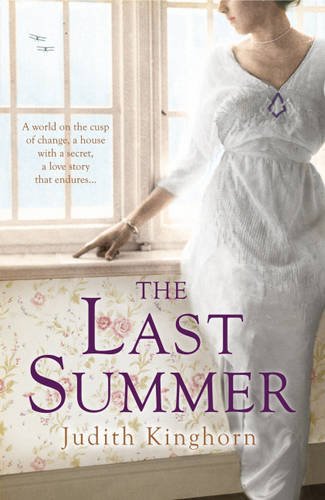The Year After | The Last Summer
Occasionally the accidents of publishing bring out two books in the same season which neatly complement each other. The Last Summer and The Year After do just that, so much so that it seems inexcusable not to include them in the same review.
Even the titles are complementary. The Last Summer is the sultry, idyllic summer of 1914, before the young men went away to war, and The Year After is 1919, the year the survivors came back to a grieving, shell-shocked nation. Both novels are set in country houses in southern England, the homes of the super-rich, and both are told in the first person.
The narrator of The Last Summer is the teenage daughter of the owner of the house. That summer she loses her innocence to a young man on the outer edge of her social milieu, her uncle’s illegitimate son. Before the year is out her whole world loses its innocence on the battlefields of France, and the story follows her romantic obsession through the nightmare of the war into the early years of peace.
The narrator of The Year After is a young officer returning from France. Before the war he has been a frequent guest at a country house in Devon, even though he is not really part of the family’s glittering milieu, where he fell in love with the daughter of the house. At Christmas 1919, he is invited back, as the family struggles to restore the old routine. He consummates his prewar love affair, although he fails to reignite his old passion, and takes the first steps to finding a new love.
It is almost as if the same story is being told by different authors from different viewpoints, although the romantic outcomes are not the same. In both stories the prewar world was not as innocent as it seems, and secrets emerge after the war. The Year After has a more explicit detective story element, but it is not really a murder/mystery (the suspected murder wasn’t a murder). Both books excel in evoking rural England of the early 20th century – the lush, lovely summer countryside of Sussex in 1914 and the harsh winter moorland of Devon in 1919 – and the closed hierarchical world of the village and the ‘big house’, and both books chronicle the shock, grief and bewilderment as this world blows apart.
There are obvious echoes of Gone with the Wind. Unlike the antebellum South, aristocratic England was on the winning side in its war but its way of life, if not quite blown away, was badly shaken and lost its sense of permanence and legitimacy. Both The Last Summer and The Year After mix nostalgia and cynicism, a gracious world with a dark underside that maybe deserved to die, if not with so much suffering.










